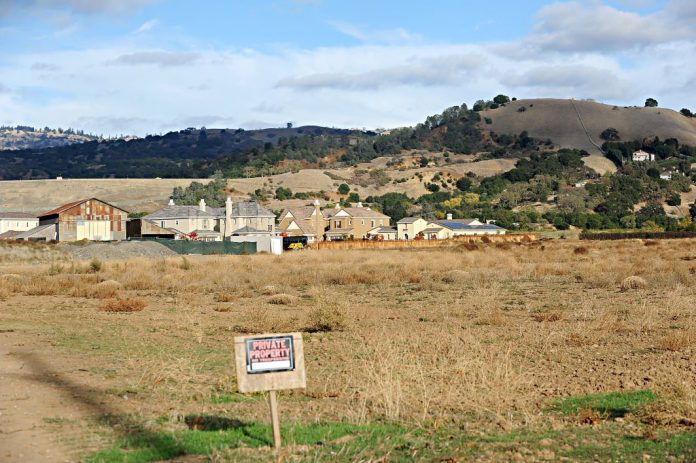
School district leaders were flanked with an arsenal of state environmental experts as well as their own consultant to help quell resident concerns and bring trustees up to speed on their plans to clean up the contaminated soil on a proposed elementary school site.
No action was taken at the Sept. 20 meeting on a final remediation plan for the 10-acre plot of land in northeast Morgan Hill, the future home to about 600 local kindergartners through fifth graders. It will be called S.G. Borello Elementary School in homage to the donating family.
However, Morgan Hill Unified Superintendent Steve Betando wanted to make it abundantly clear that his district staff is working with members of the state’s Department of Toxic Substances Control and other environmental consultants to assure the safety of those future students and faculty as well as to the surrounding neighbors and all local residents.
Even with MHUSD’s Director of Construction Casino Fajardo leading a presentation on the entire process for the Borello Property Remediation, which outlined multiple cleanup options and also offered input from the state’s staff, Betando was resolute in the direction the district was headed.
“The off-haul method and removing the soil that has the toxins in it is the only method I will recommend,” Betando said.
The other options presented—and mandated by the state to be included in any Removal Action Plan under consideration—were bioremediation (which was previously used to clean up the soil covering the Peet Road property but only provided a temporary fix since the toxins returned); capping (a process which pours asphalt over the designated area before building on top of it); and no action.
“We don’t want to go back to bioremediation or any treatment of the soil for that matter,” Betando added. “We know that science is always being created, but there’s a guarantee when the soil with the toxins is removed from the site that it will never re-occur.”
Fajardo explained that district staff plans to submit its remediation plan, which will exclude the capping method as an option, to the DTSC for approval by next week. The state then has 30 days to respond to that plan. In the interim, a public hearing will be scheduled to give residents the opportunity to chime in.
At Tuesday’s meeting, seven residents—most of whom lived in one of the adjacent neighborhoods to the Borello site that intersects at Peet Road and Mission Avenida—offered their input. They requested an emailed response to their questions, a majority of which centered around the process of hauling away 38,000 tons of soil contaminated with dieldrin (a banned and harmful pesticide) without it getting into the air.
To combat that scenario, one expert explained the contaminated soil will be wetted down before being loaded on trucks so it won’t create dust. In addition, dust monitors will be set up along the perimeter of the property and an alarm will go off with any visible dust detected in the air. The truck beds will be covered when transporting the soil to the Kirby Canyon Landfill Management Facility (910 Coyote Creek Golf Drive) for disposal.
The remediation, which is estimated to cost $1.87 million, will need about 2,100 truckloads and will take 12 weeks to complete. District staff hopes to begin in late spring or early summer.
Construction of the new $20 million school is estimated to take 490 days, immediately following the soil cleansing through February 2019. The school will be funded through the $198 million Measure G capital improvements bond along with developer fees.






